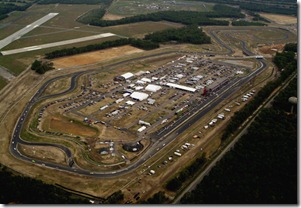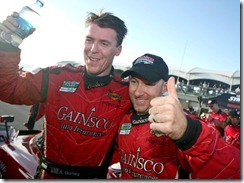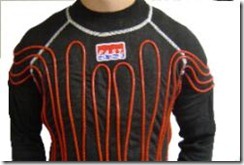DAYTONA BEACH – “Consciousness streaming,” as was ol DC’s writing style once characterized by one dear friend, (yes, Ol’ DC actually has such; one or two, anyway). That is, when his style is unconstrained by the narrow pillars and conventions of journalism, the AP Stylebook and social mores.
(Surely, given the state of American education, someone out there thinks the, um, plural for “more” is entirely misplaced, above.)
For sure, the reader is about to enter another dimension of sight, sound, thought and time; you’re about to enter Ol’ DC’s mind (with coincident “Thanks” and apologies to Rod Serling) – about the only thing that causes Jon Fogarty great pain. Well, that and anyone other than himself holding a race lead.
Now, on to the Rambling Prose (a great Nat King Cole song?):
To be quite frank, the new Grand-Am Ferrari Italia, or “458” or “maybe both,” that tested Tuesday (and today) at Daytona International Speedway is a letdown. Big Time.
Then again, perhaps still adversely affected, this Prancing Horse admirer still is recovering from his visit to New Jersey Motorsports.
(When NJM truly has a facility that is a park, a la Birmingham’s Barber Motorsports Park, then “Park” will herein become a regularly featured part of NJM.
(Until then, it’s just another Sebring - absent a racing heritage that allows toleration of The Zoo. And, yes, Sebring once actually was a U.S. Army Air Forces base, too. No, it didn’t manufacture thunderbolts. It had ‘em and still has ‘em; plus oranges. Lots and lots of oranges that also were vital to the war effort – for should a pilot have scurvy, he didn’t fly.
(In faraway Daytona Beach – from Sebring, not NJM – it, too, had an airbase, and a naval hospital and a beach with lots of scantily clad beautiful women, for the attention of whom even non-pilots claimed to fly.
Furthermore, July heat and humidity are an Alabama staple, so the recent heat wave that hit New Jersey Motorsports’ neighborhood was a relative lightweight, being only a big deal to those unfamiliar with 100+-degree heat indexes.
Why, with NJM heat so great, one woman, apparently bereft of reality, carried a fully deployed chartreuse umbrella, evidently expecting a hard rain instead of harsh sunshine.
If not heat nor recovery from such, perhaps, then, the Ferrari Italia held unmet expectations.
Yes, Ol’ DC does remember watching Pedro Rodriguez piloting a Dino – a name which most Americans associated more with Sinclair Oil’s dinosaur-mascot caricature instead of Enzo Ferrari’s much-grieved lost son – and most especially, the 312P, born of a time when a great battle had been joined between a previously spurned suitor and the object of his passion.
Bottom line, though: During that time period Ford Motor Company as often as not won on the sportscar front.
Beyond the obvious differences in language and styling were beliefs of how cars should be geared and powered, four speeds for the throaty Americans (two for Chaparral); five speeds for the screaming Italians.
As night settled on the world’s sportscar endurance tracks rarely did one see light coming from anyone, anything other than the competitors – whether a car’s or its driver carrying a “torch” so as to affect a fix of it.
And while one could often ascertain a car make through the front or rear lights’ positioning, one also had to risk his retinas doing so.
As much as any dance anywhere, an endurance race has a rhythm which changes with the hour, ranging from the bold brashness of the daylight to the settled rote of night.
By the wee dark hours of a race most fans were and still are disposed of being anywhere but a racetrack’s stands, which then are left to channel and shape the sound going through its bleachers as would gently swaying wind chimes in a breeze.
With those sounds came the ability to identify a car, a team, a winner-to-be and, often with its silence, a loser, too.
While there are few grunts to be found equaling that of an American V8, Ferrari was king of the night’s song – one missing from the also-beautiful Prancing Horse of the last two days.
“That’s treatable,” offered a Grand-Am type, known forever herein simply as “Nine Lives.”
And that’s exactly what Ol’ DC most wanted to hear – for now.
Later,
DC



